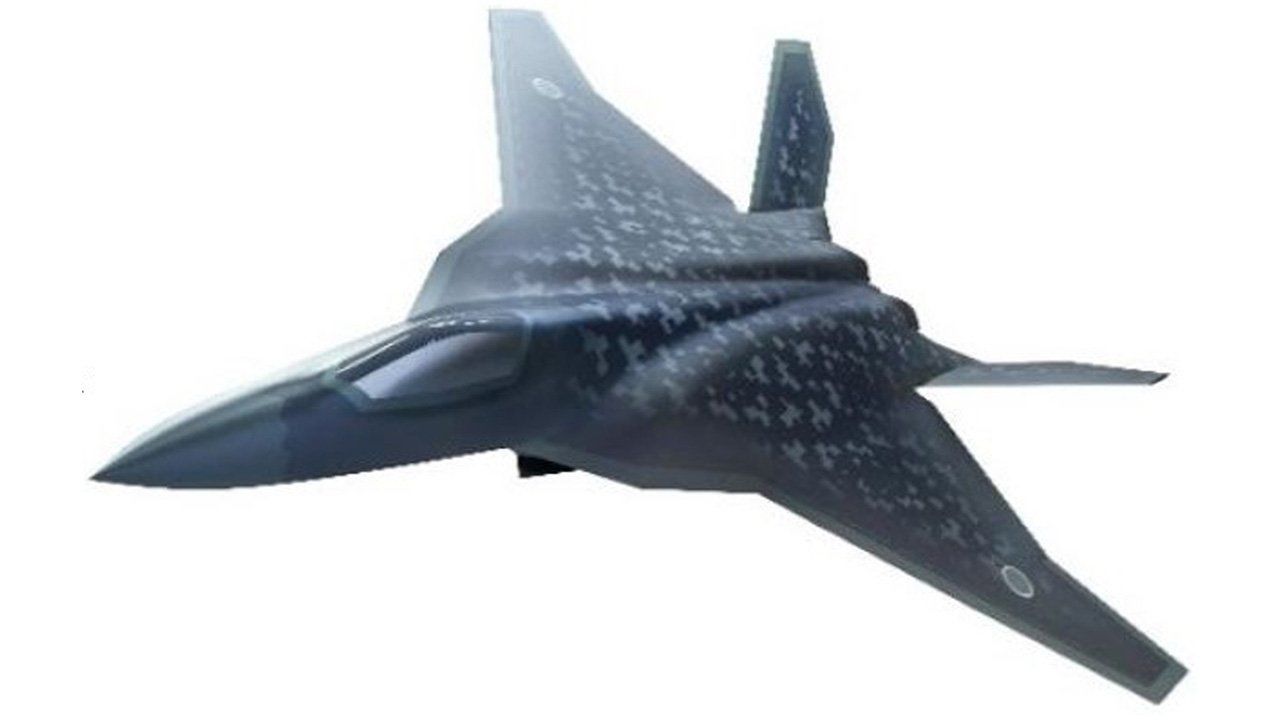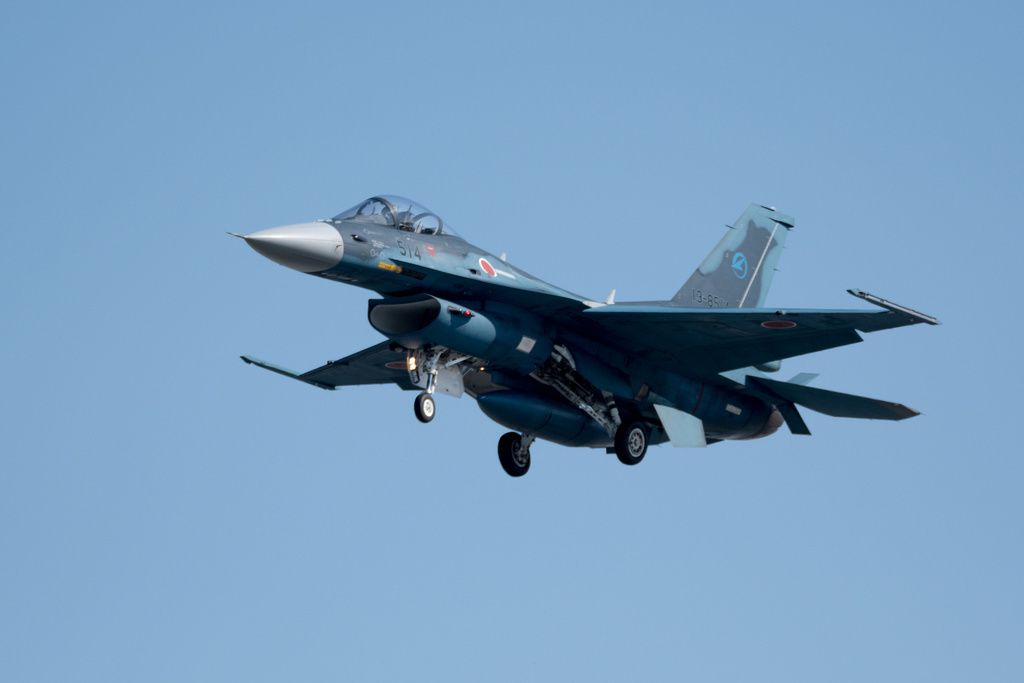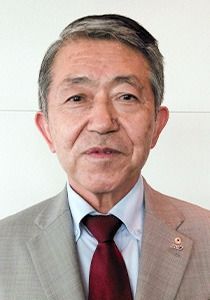
Looking Toward the Next Stage in Japan’s Air Defense: Prospects for the F-X Fighter
Politics- English
- 日本語
- 简体字
- 繁體字
- Français
- Español
- العربية
- Русский
A New Approach to the Fighter
NOSE NOBUYUKI Japan began deploying the F-2 fighter jet in 2000. This model will start to be removed from duty in 2035, at which point its replacement will be rolled out. Development of the F-X jet, likely to fill this role, has only just begun, but you’ve described Japan’s next-generation fighter as one that will upend the very concept of the fighter jet. Where is Japan’s program heading?
IWASAKI SHIGERU In the past, Japan’s fighter corps fell into two categories: FI aircraft, or fighter interceptors, and FS, or fighter support aircraft. The FI units were mainly tasked with preventing enemy fighters and other aircraft from penetrating Japanese territory, along with maintaining air superiority in a given airspace. The main missions of the FS units, meanwhile, included mounting attacks against ship- or land-based enemy installations and close air support for operations on land or at sea.
This all changed with the FS-X, the new generation of aircraft rolled out starting in 1997 to replace the aging fleet of F-1 support fighters. From the beginning the FS-X was designed as a support fighter—hence its name, which came from “Fighter Support Experimental”—with dramatically improved interception capabilities, meaning its capacity for air-to-air combat. This largely erased the line that had existed between the FI and FS units previously, and the FS-X eventually came to be called the F-2 instead, getting away from the “support” component of its name. The next-generation F-X we’re now developing is not called an FS-X fighter due to this background.
If we think about the likely makeup of Japan’s fighter jet units in years to come, though, we’re going to have F-15 units with upgraded capabilities, F-35A and F-35B units, and F-X units. This probably means we will need to equip the F-X with ASM capabilities not available in the F-15 and F-35 platforms, letting it mount air-to-surface missile attacks against ships and land targets.

The F-2 is scheduled to be rotated out of service in the next decade. (© Miyata/Amana Images/Kyōdō)
NOSE What exactly is this next-generation fighter going to be, then?
IWASAKI I believe it’ll be something that turns standard ideas about fighter jets on their ear. Conventional fighters were equipped with missiles, machine guns, bombs, and other armaments and mainly tasked with engaging with enemy fighters in air combat to achieve air superiority, or carrying out air-to-surface attacks on enemy installations or advancing enemy seacraft. This primary mission isn’t likely to go away with the coming generation of fighters, but we should see their network capabilities considerably enhanced, making them function as sensors for the force as a whole.
NOSE What do these enhanced network capabilities entail?
IWASAKI Some of these capabilities are already in place in our current fleet of fighters, but the new ones will be able to gather, relay, and transmit much more data than before. They’re going to have more of the functionality we now see in our reconnaissance aircraft; our ELINT, or electronic intelligence craft, that support electronic warfare; and our SIGINT craft handling signals intelligence operations like communication interception. They’ll also be able to function like mini AWACS, the airborne warning and control system craft that keep watch on broad areas. In short, these new fighters are going to play central roles in Japan’s defense strategy.
Tighter Coordination with Drone Operations
NOSE What can you tell us about the new jets’ integration with unmanned aircraft?
IWASAKI We’re going to need to consider battle configurations where a fighter or transport aircraft carrying multiple drones launches them into a theater, after which they are controlled from the fighter, both by a human operator and by AI, to carry out surveillance of and attacks on enemy territory. Drones are relatively inexpensive, meaning it’s less of a blow when they are shot down, even as they force the opponent to use costly missiles to deal with them.
Drones generally have a small profile, making them more difficult to spot and shoot down. If they’re launched in a large group, it makes it even harder for the opponent to get them all. These are assets with the capacity for bringing considerable change to the battlefield of the future. We may not be able to finalize this sort of functionality for inclusion in the first set of F-X fighters to take to the skies, but it’s something that will be a must eventually.
NOSE Are these drones, in concert with the next-generation fighters, going to be useful in detecting and gathering information on ballistic, hypersonic, and irregular-trajectory missiles, whether at launch or during flight?
IWASAKI This will of course depend on the specific capabilities of the drones in question, but I think it’s in the range of possibility. Generally speaking, drones can fly at very low altitudes, making them difficult to detect, and therefore capable of penetrating deep into enemy territory. This would allow them to observe ballistic missile and other launch sites, using their sensors to detect and track silos and mobile launch platforms.
By deploying multiple drones along a ballistic projectile’s route, we can also calculate the path of even low-trajectory missiles and those with irregular trajectories. Of course we won’t be depending on drones alone—they’ll need to be used together with our existing Shared Early Warning systems and satellite constellations. But the roles played by drones are certain to expand dramatically as we go forward. This is why I believe it’s inevitable that the F-X platform will need to be integrated with drones.
NOSE What other additional functionality do you think will need to be a part of the platform?
IWASAKI We have to remember that even if we can achieve the world’s most advanced fighter in 2035, when we start rolling it out, the pace of technological development is always increasing, and it’s guaranteed to be outdated soon enough. The important thing is to continue working technological advances into the design while development moves forward, as well as to ensure the platform’s expandability so it can be equipped with new capabilities in the future.
I believe that this next-generation fighter will be an asset we can adapt to all the defense configurations we might need by continuing to enhance its capabilities after its rollout. The US-developed F-35 fighter platform shows a similar capacity for evolution. As Japan develops the F-X, it has to take these global trends into account and reflect them in its work.
A Need for Increased Missile Range
NOSE Russia has deployed its Kinzhal hypersonic air-to-surface missile on the Tupolev Tu-22M3 strike bomber, among other aircraft. Does Japan need to consider equipping its new fighters with hypersonic missiles as well?
IWASAKI In terms of military theory, of course it’s valuable from a security standpoint to have access to a wide range of weapon types and functions. But we need to consider this alongside the budgetary cost. Determining the types of armaments we need, and where to deploy them, is something we need to do on the basis of a national security policy taking a truly comprehensive look at all the factors involved. The decisions we make on what functions to include in Japan’s next generation of fighter jets must also be rooted in these overall viewpoints.
Now of course hypersonic missiles are amazingly advanced in terms of what they can do, compared to other weapons in the missile space. But preparing those for deployment on the F-X platform would involve tremendous development costs, and at the current stage I don’t think we can say the benefits would definitely outweigh those costs. Before we embark on a new program like that there are other tasks to tackle, such as increasing the range of our existing missiles. Japan has some world-leading technologies to build on here. Our ASM-2 and ASM-3 missile platforms are top-level air-to-ship weapons, and when it comes to the air-to-air space, we have the AIM-4 and AIM-5 platforms, which are similarly performant.
Recently Japan has been deploying long-range missiles produced from other countries, but we have to start focusing on increasing the range of our domestically produced options. Longer ranges for our own missiles will give us more reach for the strategies we put together, and in the end, will increase our own deterrent capacity.
NOSE Maritime Self-Defense Force vessels like the Izumo and Kaga are being repositioned as “light aircraft carriers,” and the F-35B is being touted as a fighter option that could take off and land on these seaborne platforms. Is Japan planning to make the F-X something capable of flight to and from light carriers?
IWASAKI Ships like the Izumo aren’t equipped with catapults to launch planes, which means that if we want to use the next-generation fighter there, we’ll need to work from the concept stage to make it something like a STOVL aircraft, one capable of short take-off and vertical landing. STOVL functionality is an important element to consider, and will likely be a necessity at some point, but I’m not sure that it is in our sights at this point in time.
NOSE Some have been saying that the F-X would be a joint development project with British involvement. What can you tell us about that?
IWASAKI In December 2018, when the most recent National Defense Program Guidelines were issued, a cabinet decision stated that Japan would take the lead in the development of the F-X, while maintaining an open stance on the possibility of international cooperation. In other words, the F-X will be a primarily Japanese project, but we welcome participation by foreign companies willing to support our efforts. US firms like Lockheed Martin, which developed the F-22 and F-35, Northrop Grumman, and Boeing, and British companies like BAE Systems, all have considerable know-how in the area of fighter jets. When it comes to sourcing the engines for the platform, US players like GE and Pratt and Whitney and Britain’s Rolls-Royce are likely candidates. I believe we’ll see the development framework take firmer shape by the end of this year.
The Aim: Overwhelming Superiority
NOSE What will be the main rivals for the F-X in the East Asian region?
IWASAKI Ideally, we’ll be able to say that the F-X has no rivals. We need to make this a fighter that’s head and shoulders above all its competitors in the field. We’re aiming for a level of technology going far beyond anything other nations are deploying. When Japan first made the F-15 fighter and P-3 Orion a part of its arsenal, there were no other countries in the region with access to technologies as advanced as theirs. They therefore knew that going toe to toe against Japan would be a painful experience. Technological superiority was a form of deterrence, in other words.
Japan is a nation of more than 120 million, but there are only around 250,000 members of the Self-Defense Forces—somewhat fewer, actually, if you consider people rotating out and the ongoing need to replenish numbers through recruitment. There are only so many fighters and naval vessels we can field. To protect Japan’s peace, independence, and security, therefore, we have to secure a level of technology going far beyond what our competitors have. Making our next-generation fighter one that goes far beyond what others can deploy will be a must to ensure that these other parties understand Japan’s technological superiority and seek to avoid attacking us—making our fighter an effective form of deterrence. I believe Japan is ready and able to develop its own fighter that can accomplish all of this.
(Originally published in Japanese. Banner photo: An artist’s conception of the F-X fighter, the planned replacement for Japan’s F-2 fighter fleet. Courtesy Ministry of Defense; © Jiji.)
